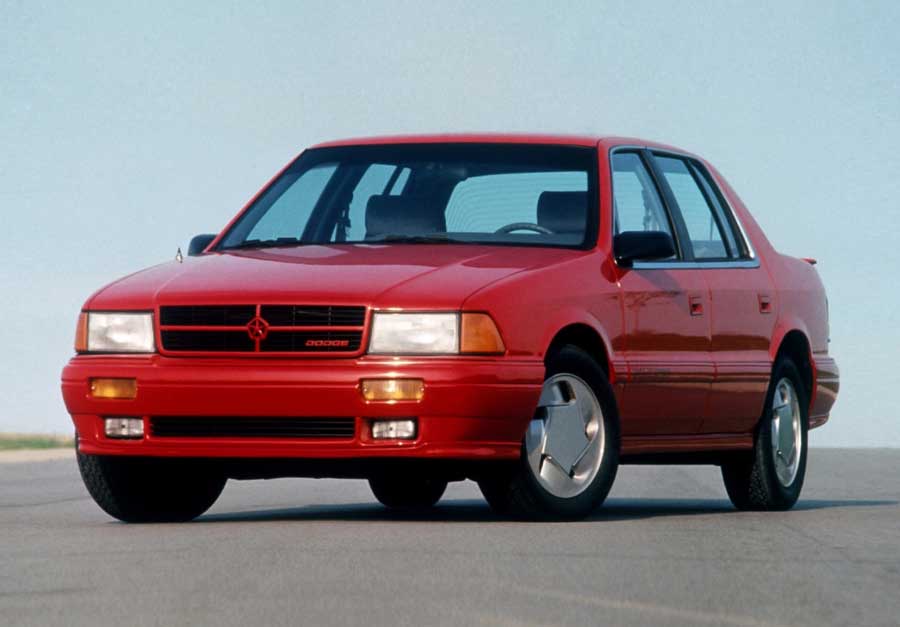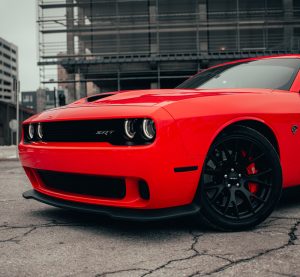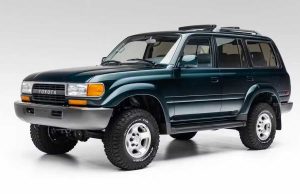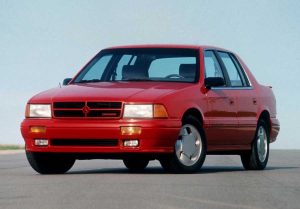Dodge Spirit R/T The 1990s Sleeper That Shocked America

Dodge Spirit R/T
In the early 1990s, few cars embodied the phrase “wolf in sheep’s clothing” quite like the Dodge Spirit R/T. On paper, it looked like a sensible mid-size sedan bred from Chrysler’s humble K-car lineage. On the road, it was something else entirely—a quiet assassin that surprised pricier, more prestigious performance sedans and left an indelible mark on American car culture.
At the heart of the Spirit R/T’s legend was an unlikely collaboration. Under its unassuming hood sat a turbocharged 2.2-liter four-cylinder with 16 valves and dual overhead cams, engineered with the help of Lotus. This “Turbo III” powerplant delivered a stout 224 horsepower at 6,000 rpm and 217 lb-ft of torque at just 2,800 rpm—numbers that were astonishing for a front-wheel-drive family sedan at the time. Unlike many contemporaries that paired high-output engines with automatic transmissions, the Spirit R/T was offered exclusively with a heavy-duty A568 five-speed manual featuring Getrag components, embodying a focused, enthusiast-first approach.
The numbers told the story. In period testing, the Spirit R/T sprinted from 0 to 60 mph in 5.8 seconds and covered the quarter-mile in 14.5 seconds at 97 mph. Those figures put it ahead of celebrated names like the BMW M5 and the Ford Taurus SHO in contemporary comparisons. For a brief, dazzling moment, the Spirit R/T wore the crown as the quickest American-built sedan, and it did so without flash or fanfare.
This was a car that wore its power modestly. Styling cues were minimal: a subtle rear spoiler, color-keyed 15-inch “snowflake” alloy wheels, and little else to broadcast its capability. Inside, the cabin was roomy and straightforward, more about comfort and practicality than theatrics. It was a sedan you could park in any lot without drawing attention—until you pressed the accelerator.
Underneath, the Spirit R/T carried over much of the Spirit’s simple mechanical foundation, yet Chrysler gave it the tools to handle its newfound performance. Four-wheel disc brakes improved stopping confidence, and a heavy-duty rear sway bar helped the chassis stay composed. Torque steer, a familiar quirk of powerful front-drive cars, could still make itself known under hard acceleration, but the overall package proved surprisingly playful and forgiving. The Spirit R/T may not have been a precision instrument in the European mold, but it offered a uniquely American flavor of speed: unapologetic, affordable, and practical.
Value was a major part of its appeal. With an MSRP around $17,820 in 1991, the Spirit R/T undercut key competitors by thousands of dollars. It gave buyers an irresistible equation: family-friendly space, understated design, and performance that could humble the era’s performance luminaries. It became an instant hero among enthusiasts who prized stealth and real-world pace over badges and bravado.
The Spirit R/T’s run was brief, which only deepened its mystique. Built for just two model years—1991 and 1992—it was always rare. The U.S. production tally came to just over 1,200 units for 1991 and fewer than 200 for 1992, making it one of the more elusive high-performance sedans of its time. That scarcity, combined with its capability and unusual backstory, has elevated the Spirit R/T to cult classic status in Mopar circles and beyond.
Part of its enduring charm lies in what it represents. The Spirit R/T emerged from an era when Chrysler leveraged turbocharging to achieve outsized results from modest platforms. The Lotus-designed cylinder head and intake manifold stand as proof of the program’s ambition: the company took an economy-car foundation and infused it with genuine engineering sophistication. For enthusiasts, it’s a reminder that innovation sometimes comes from unexpected places.
Today, surviving examples are coveted for exactly what made the car so special in period: low-key looks, high-impact performance, and the satisfaction of driving a car that’s more than meets the eye. Enthusiasts appreciate the R/T’s analog character—the snick of a five-speed shifter, the surge of a turbo waking up in the midrange, and the way the car blends everyday Utility with weekend drama. Maintenance and parts support for the turbocharged engine and Lotus hardware can require diligence, but owners often find the results well worth the effort.
The Spirit R/T’s legacy reaches further than its production numbers might suggest. It helped define the modern concept of the factory “sleeper”: a car without the aggressive styling or luxury trimmings of contemporary sport sedans, yet able to trade blows with them in objective performance. In today’s market of loudly styled performance machines, the Spirit R/T remains a reminder of the thrill of subtlety—and the delight of beating expectations.
As a piece of American performance history, the Dodge Spirit R/T is more than a curiosity. It’s a testament to clever engineering, the value of simplicity, and the enduring appeal of a car that doesn’t need to shout to be heard. For those who know, it’s a legend—and for those discovering it now, it’s one of the 1990s’ most rewarding surprises.
Protect your classic Dodge with a custom car cover from Cover Company.







